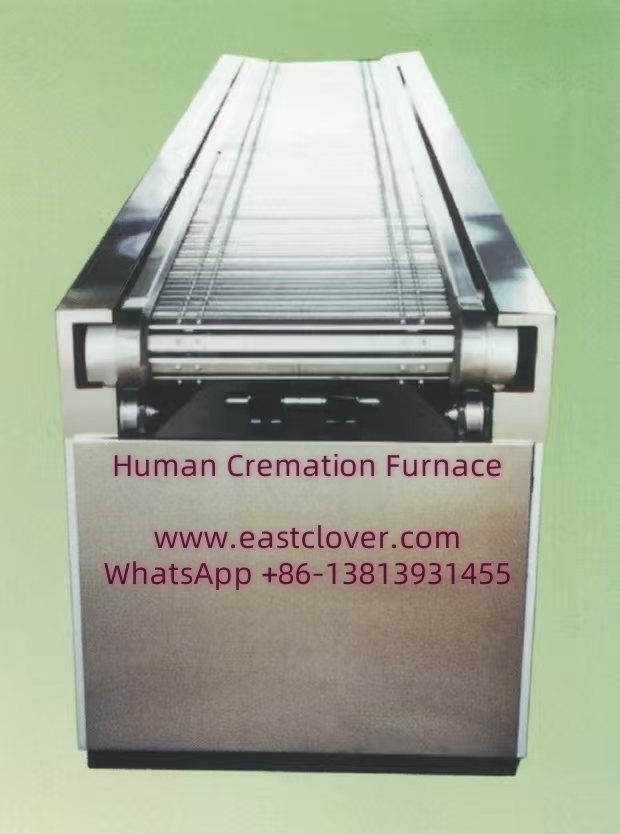Introduction to Cremation and Environmental Impact
Traditional cremation has long been a preferred method for handling human remains, valued for its simplicity and cost-effectiveness.
However, conventional cremation furnaces rely heavily on fossil fuels like natural gas or propane, releasing significant amounts of
carbon dioxide (CO2) and other pollutants into the atmosphere. A single cremation can emit approximately 400 kilograms of CO2,
alongside mercury from dental fillings and particulate matter. As the global demand for cremation grows—driven by urbanization and
shrinking burial space—the environmental toll has sparked urgency for sustainable alternatives.
Next-Generation Cremation Furnaces: Key Innovations
Next-generation cremation furnaces integrate advanced technologies to minimize ecological footprints. These systems prioritize energy efficiency,
emission reduction, and resource recovery, aligning with global sustainability goals.
Energy Efficiency and Renewable Energy Integration
Modern furnaces leverage electric heating elements powered by renewable energy sources like solar or wind, reducing reliance on fossil fuels.
Advanced insulation materials, such as ceramic fibers, retain heat more effectively, cutting energy consumption by up to 30%. Some models
even recover waste heat to power onsite facilities or nearby buildings.
Emission Reduction Technologies
To combat air pollution, these systems employ multi-stage filtration:
- Particulate Filters: Capture ash and soot.
- Scrubbers: Neutralize acidic gases (e.g., sulfur dioxide).
- Catalytic Converters: Break down nitrogen oxides and volatile organic compounds.
- Mercury Arrestors: Extract toxic mercury vapor from dental amalgams.
Hydrogen-powered furnaces are also emerging, producing only water vapor as a byproduct.
Resource Recovery and Circular Economy
Next-gen systems recover metals from cremated remains (e.g., titanium implants) for recycling. Biochar production from organic residue offers
agricultural or carbon sequestration applications. Heat recovery modules convert excess thermal energy into electricity, creating closed-loop systems.
Sustainable Materials and Design
Manufacturers are adopting recycled steel and refractory ceramics for furnace construction. Modular designs allow incremental upgrades,
extending equipment lifespan and reducing waste. Digital monitoring tools optimize combustion efficiency, minimizing fuel use.
Regulatory and Consumer Drivers
Governments worldwide are tightening emissions standards for crematoria. The European Union’s Eco-Design Directive, for instance, mandates
energy efficiency benchmarks. Concurrently, eco-conscious consumers are demanding greener end-of-life options, pushing funeral homes to adopt
sustainable technologies.
Challenges and Future Outlook
High upfront costs and lack of infrastructure for hydrogen or electric systems remain barriers. However, declining renewable energy prices and
carbon pricing mechanisms are accelerating adoption. Innovations like alkaline hydrolysis (water cremation) and microbial decomposition are
also gaining traction as complementary solutions.
Case Study: Sweden’s Green Cremation Initiative
In 2022, Sweden launched a pilot program using electric cremation furnaces powered entirely by wind energy. Emissions dropped by 90%, and recovered
heat now warms a neighboring hospital. The model exemplifies how policy, technology, and public engagement can drive sustainable transformation.
www.southclover.com
Next-generation cremation furnaces represent a critical step toward reconciling end-of-life practices with planetary health. By prioritizing
renewable energy, emission control, and resource recovery, these systems mitigate the environmental impact of cremation while meeting evolving
consumer and regulatory demands. Continued investment and innovation will be essential to scale these solutions globally, ensuring deathcare
contributes positively to a sustainable future.
Frequently Asked Questions
What defines a “next-generation” cremation furnace?
These furnaces integrate renewable energy, advanced emission controls, and resource recovery systems to reduce environmental impact.
Examples include electric/hydrogen-powered models and heat recovery technologies.
How do these furnaces reduce carbon emissions?
By using clean energy sources and optimizing combustion efficiency, they slash CO2 output. Filters and scrubbers further eliminate
harmful particulates and gases.
Are next-gen cremation systems more expensive?
Initial costs are higher, but lower operational expenses (e.g., fuel savings) and government incentives often offset investments over time.
Can existing crematoria upgrade to these technologies?
Yes. Retrofit kits for emission controls and heat recovery are available. Full transitions may require infrastructure upgrades, like
electrical grid connections for electric furnaces.
Do governments regulate cremation emissions?
Many countries enforce strict limits on particulate matter, mercury, and CO2. The EU and California have particularly rigorous standards.

Comments are closed